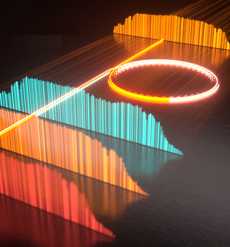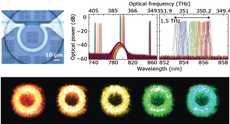Jordan Stone
NIST Research Scientist
Research Scientist

Contact Information
National Institute of Standards and Technology
- Email:
- jordan.stone@nist.gov
- Lab:
- NIST 216/E108
Additional Info
- Google Scholar
- View Profile
About
Jordan is a NIST research scientist working on the metrology of nonlinear nanophotonics devices.
Research Areas:
- Integrated photonics design/fab/test
- Nonlinear nanophotonics
Research Groups
JQI
Recent Publications
All-optical azimuthal trapping of dissipative Kerr multi-solitons for relative noise suppression
, , APL Photonics, 10, 016104, (2025)All-optical noise quenching of an integrated frequency comb
, , Optica, 12, 1020–1030, (2025)Advancing on-chip Kerr optical parametric oscillation towards coherent applications covering the green gap
, , Light: Science & Applications, 13, 201, (2024)
Recent News
![Illustration of the nanophotonic spectral translation of an electro-optic frequency comb]()
![Optical parametric oscillation device with an underlying thermo-optic heater (top) and OPO devices generating colors across the green gap (bottom).]()
New results on chip-scale lasers based on nonlinear integrated photonics
September 30, 2024![A green line branches into a blue, a green and a red line inside of a flat ring.]()


